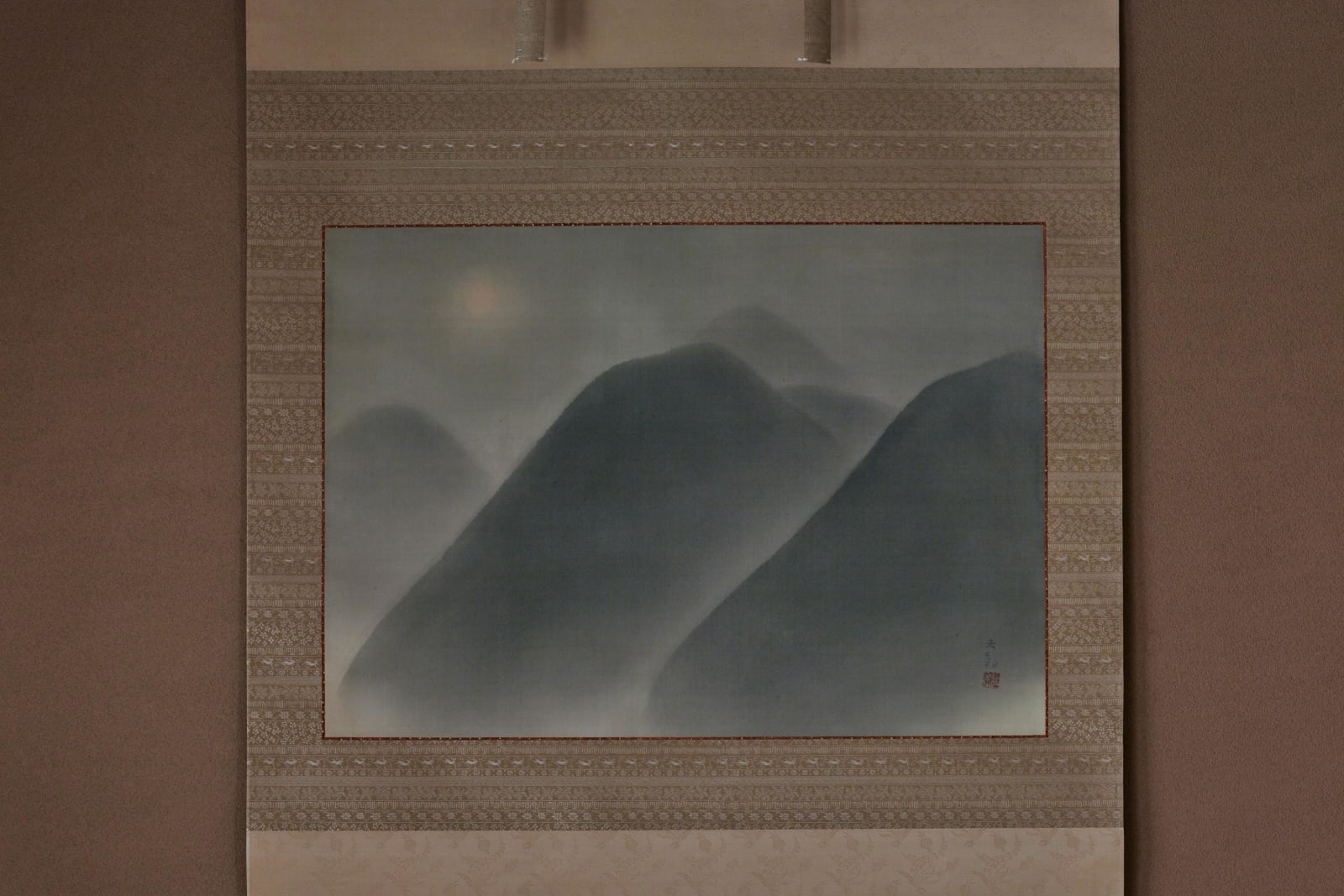Yokoyama Taikan (1868–1958)
Yokoyama Taikan registration no. re-13
With a box signed by the artist, double box
Seal: Shokodoshu
59 x 85 cm
170 x 102 cm (overall)
Further images
On September 1, 1923, the Tenth Exhibition of the Revived Japan Art Institute opened at the Takenodai Exhibition Hall in Ueno, Tokyo. This day was the customary preview day for the selected artists and news reporters, but at 11:58 am the Great Kantō Earthquake occurred, which would claim a total of more than 100,000 victims. At that time, Saitō Ryūzō, Kawabata Ryūshi, Kimura Buzan, Maeda Seison, Kondō Kōichirō and Ishii Tsuruzō, among others, were present at the exhibition site, but the event had to close at around 1pm. On the next day, May 2, the works were hastily moved to a corner of exhibition space and the Takenodai Hall became an evacuation site for victims of the disaster. On May 12, when the number of evacuees slowly receded, the artworks were moved to the facilities of the Japan Art Institute in Yanaka under the direction of Yokoyama Taikan, Kimura Buzan, Hirakushi Denchū and Saitō Ryūzō.
Afterwards, the exhibition was shown at the Commercial Exhibition Hall of Osaka Prefecture from October 30 to November 25. The exhibition then re-opened in Tokyo at the facilities of Hōsei University from December 23 to January 6. At that time, it was Yokoyama Taikan’s Metempsychosis (The Wheel of Life) that attracted the most attention. From deep inside the mountains, dew rises from the tip of tree leaves, forming into a gentle current that gathers in the valley and enwraps the scattered villages of people living there, and that in harmony with the flow of the seasons turns into a great river, eventually washing away into the ocean. The lifecycle of these drops of water that form into clouds swirling over the sky, then turn into rain falling back onto the earth, is developed by Taikan over the immense span of a scroll almost 41 meters wide. With a designation as Important Cultural Property, it is one of the major works of an artist equally recognized for his works in brilliant color as for his mastery of ink.
The present work, done in the late Taisho era around the same time as Metempsychosis, likewise embodies Taikan’s ample skill in ink painting. The eye of the viewer is naturally guided from foreground to background through a layering of mountain contours that rely on the changes in ink gradation to produce the effect of a spring night, with the faint glistening of the full moon barely permeating the hazy skies. Accentuating with lightly done areas in the right and left of the lower half of the image, the artist implies the height of the mountains and the expanse of the plains at their feet, inviting the viewer’s gaze to enter more deeply into the mountains. At first glance, Spring Night is easily mistaken for a work of the same title that Taikan exhibited together with Quail and Evening Faces at the Second Tankōkai Exhibition of November 1925, but the contour of the mountain on the right and the position of the signature are different. Taikan may have painted the same composition repeatedly, as is the case with the splendidly colored pair of six-panel folding screens Kōyō, or the hanging scroll A Forlorn Wind Blows Over the Cold Yi River (often seen as a reflection on Taikan’s departure from the Japan Art Institute). Therefore it seems probable that the present work dates to around the same time as the work shown at the Tankōkai.
Nihonga painter from Ibaraki. Taikan was a disciple of Okakura Tenshin and Hashimoto Gaho. He assisted Tenshin in founding the Nihon Bijutsuin (Japan Art Institute), and counts as one of its most important members. Taikan was a jury member of the Bunten (Ministry of Education Art Exhibition), and exerted an influential role on modern nihonga from the Meiji to postwar eras. He was appointed an Imperial Court Artist, and designated as a Person of Cultural Merit. Taikan also received the Order of Culture.









